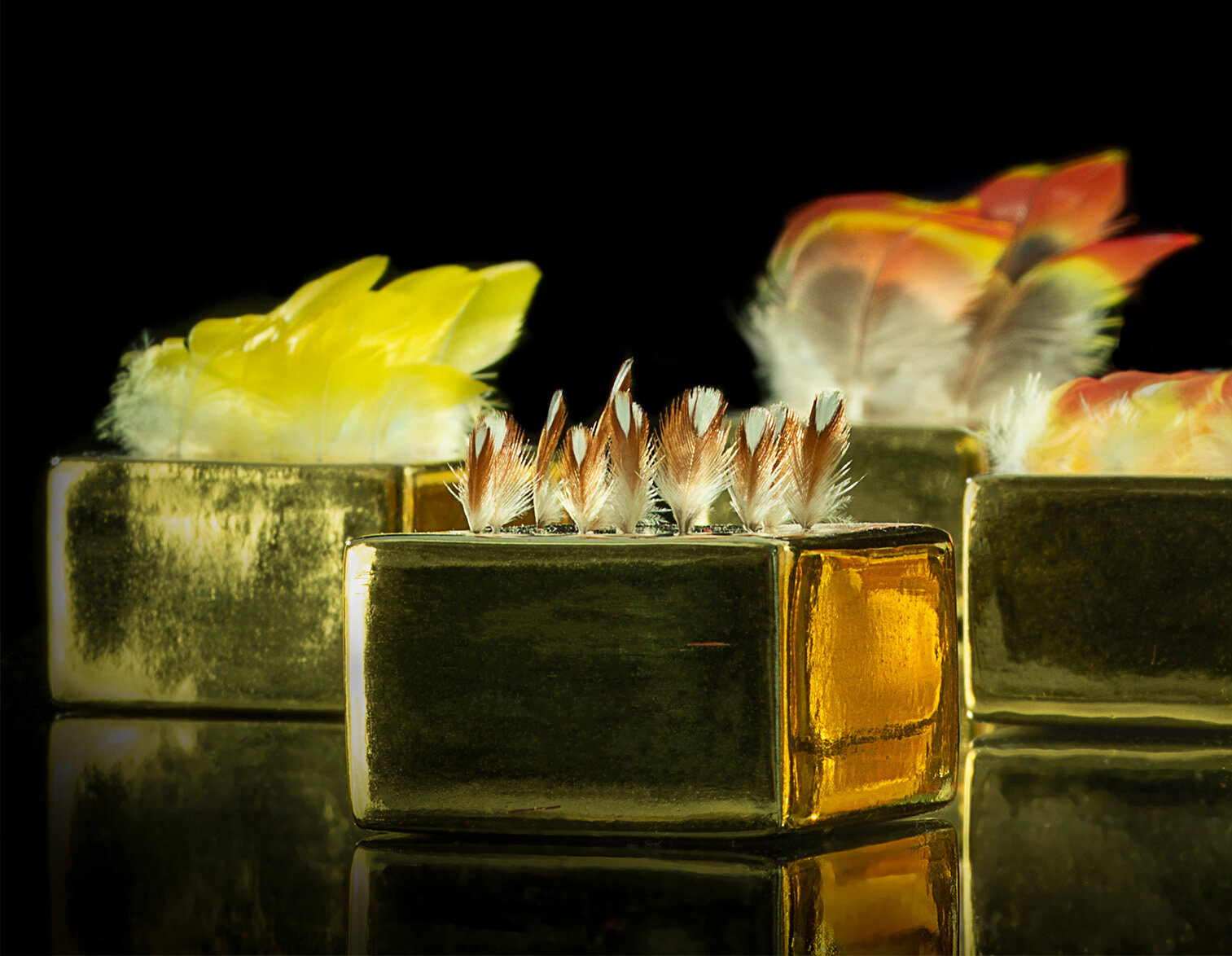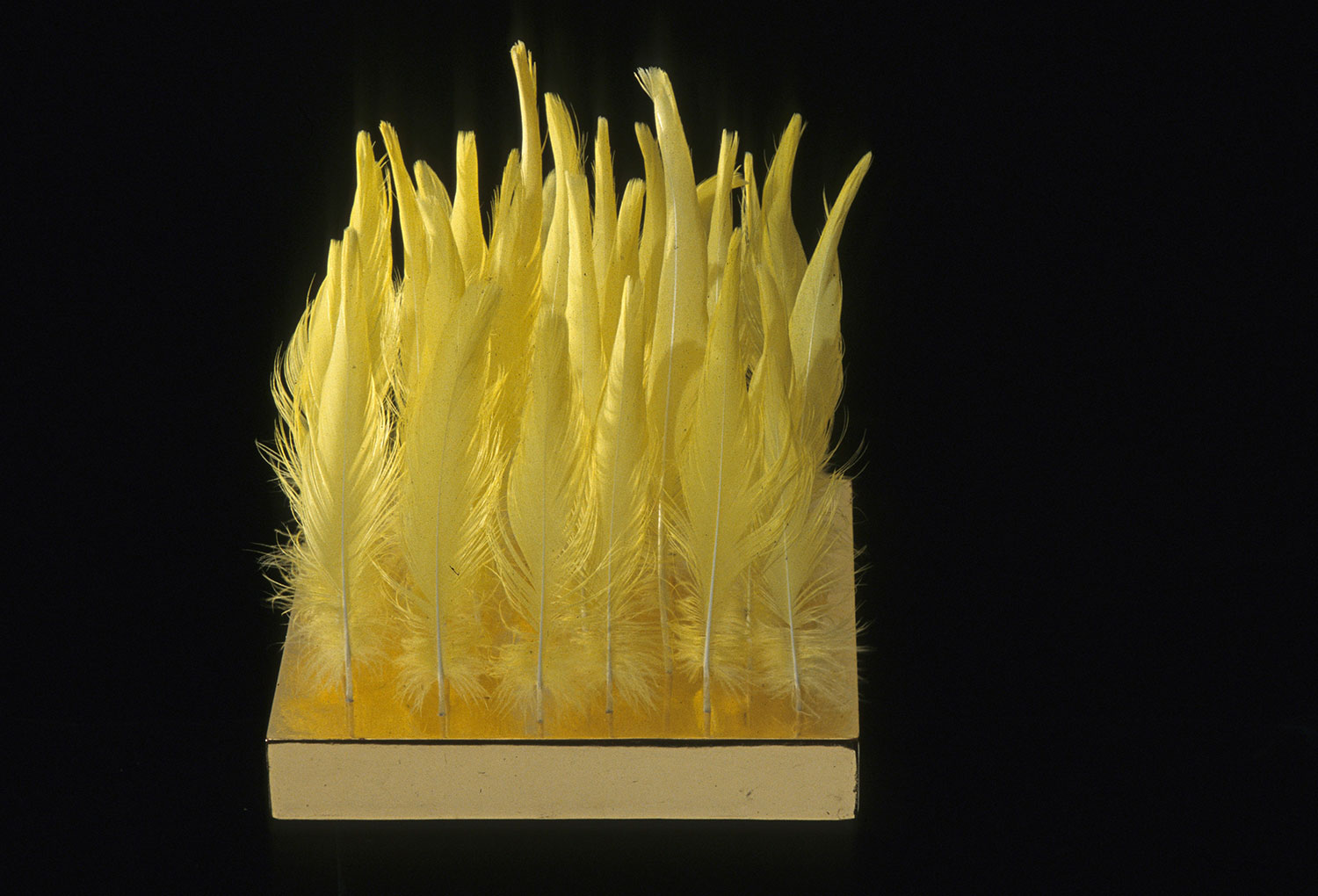Le Poeme de L’Extace, Detail. 33 1/2 x 16 x 20 (2020)
Le Poeme de L’Extase takes its title from the music that impelled its making: Alexander Scriabin’s, Le Poeme de L’Extase, and its almost unbearable musical might. Twinned with the John Adams, Must the Devil Have All The Good Tunes [Yuja Wang & the LA Philharmonic, Gustavo Dudamel conducting]—it took all of that first pandemic year of 2020 for the making of this work: a furious gathering of all my studio forces.
Something as galvanic as this music—both the Scriabin and the Adams—also demanded a poem of equal power; and one of Emily Dickinson’s volcano poems became the core of the work that the music held.
On my volcano grows the Grass
A meditative spot —
An acre for a Bird to choose
Would be the General thought—
How red the Fire rocks below —
How insecure the sod
Did I disclose
Would popular with awe my solitude /
Le Poeme de L’Extace, front view
You always get a few clues to catch when you start, and it was evident that this new work—like the music and the poetry—needed to be as large as I could make it. Le Poeme de L’Extase has 133 parrot, parakeet, pheasants and other bird feathers, tail feathers, wing feathers and other feathers: Lady Amherst Pheasant, Ring-Necked Pheasant, Silver Pheasant, Golden Pheasant, Grey Peacock Pheasant, Occelated Turkey, Wild Turkey, Guinea Hen, Magellan Goose, Flamingo, Peacock, White Peacock, Princess of Wales Grass Parakeet, Conure, Budgerigar, Jungle Fowl, Tragopan, Flamingo, Cockatiel, Hamburg, Blue & Gold Macaw, and Scarlet Macaw. Many of the feathers, such as the peacock, are doubled or tripled, for intensity of color, volume, and resonance, perhaps taking on the doubling and tripling of instruments in Must the Devil have all the Good Tunes
Le Poeme de L’extase, Detail front
I like to think that with the completion of the work, the long echo of the chime that ends the John Adams work was still audible, fading away into the air, and one more time framing the whole. Emily Dickinson, who knew her own music, had words for that: invisible as music/ but positive as sound.
Le Poeme de L’extace, working base for the making of the work, fragment.
See the full series >>Le Poeme de "L’extase













